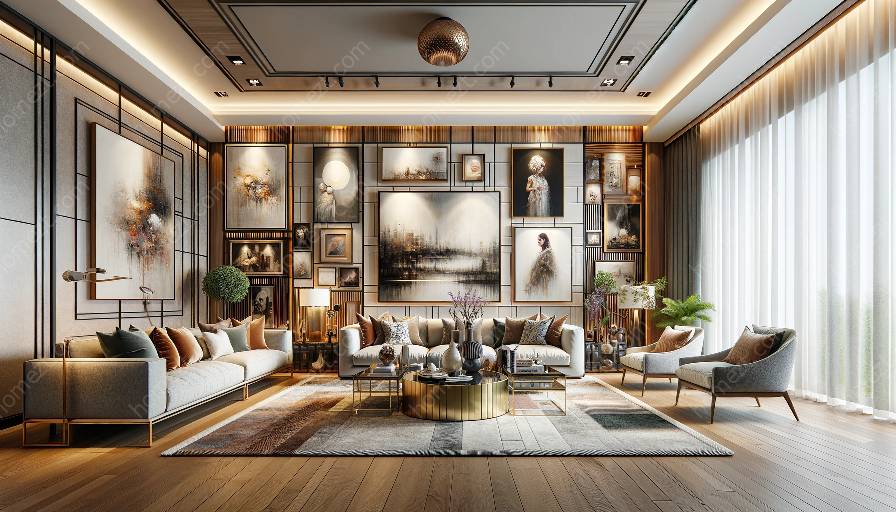Architecture and interior design are closely intertwined, with the former often serving as a significant influence on the latter. By understanding how architecture impacts interior design and how to incorporate art into decoration, you can create harmonious and visually appealing spaces. Let's explore the intricate relationship between architecture, interior design, and the art of decorating.
The Influence of Architecture on Interior Design
Architectural styles and characteristics shape the design and layout of interior spaces. For example, modern architecture, with its clean lines and open floor plans, often inspires minimalist interior design, with a focus on simplicity and functionality. On the other hand, traditional architecture, with its ornate details and formal structures, may lead to classic interior design that embraces rich textures and decorative elements.
Architectural elements such as windows, doors, and structural columns also play a crucial role in interior design. The placement and design of windows, for instance, can influence natural light and views, impacting how interior spaces are arranged and decorated. Similarly, the presence of architectural features like exposed beams or vaulted ceilings can guide the selection of furniture and decorative elements to complement the overall architectural character.
Furthermore, the materials and finishes used in architecture, such as wood, glass, and metal, can inform the choice of materials and color palettes in interior design. Understanding the architectural context allows interior designers to create cohesive and harmonious spaces that resonate with the architectural framework.
Decorating with Art in Interior Design
Artwork is an essential aspect of interior design, adding personality, color, and texture to a space. Whether it's paintings, sculptures, or mixed media art, the careful selection and placement of art can transform the ambiance of a room. When integrating art into interior design, it's essential to consider the existing architectural elements and design scheme to ensure a cohesive and balanced composition.
Art can complement the architectural style or create a captivating contrast, depending on the desired aesthetic. For instance, contemporary art may juxtapose beautifully with traditional architecture, infusing a sense of dynamism and creativity into the space. Similarly, art inspired by nature can harmonize with organic architectural elements, creating a serene and cohesive environment.
Moreover, the scale and placement of art within a space are critical considerations. Large-scale artworks can serve as focal points, commanding attention and anchoring the design scheme, while smaller pieces can be strategically distributed to create visual interest and balance. Understanding the interplay between art and architecture enables designers to curate art collections that resonate with the spatial dynamics and overall design intent.
Creating an Integrated Design Approach
When considering the influence of architecture on interior design and the role of art in decoration, it becomes clear that an integrated design approach is paramount. By harmonizing architectural elements, interior design, and art, designers can create cohesive and visually compelling spaces that engage both the senses and the intellect.
Architects and interior designers often collaborate closely to ensure that the architectural context informs and enhances the interior design scheme. By aligning the spatial volumes, circulation patterns, and visual axes with the intended function and aesthetic of the space, a unified architectural and interior design vision can be realized. Additionally, integrating art into the design process from the outset allows for a seamless incorporation of artistic expression within the architectural and interior framework.
Successful integration of architecture, interior design, and art also involves understanding the cultural and historical context of the space. By acknowledging the heritage, traditions, and local influences, designers can infuse depth and authenticity into the design, creating spaces that resonate with their surroundings and the people who inhabit them.
Conclusion
Architecture profoundly influences interior design, shaping spatial layouts, material selections, and aesthetic expressions. When combined with the art of decorating, these influences converge to create captivating and integrated design experiences. By recognizing the intricate relationship between architecture, interior design, and art, designers can craft environments that not only reflect their artistic vision but also resonate with the essence of the built environment.






































